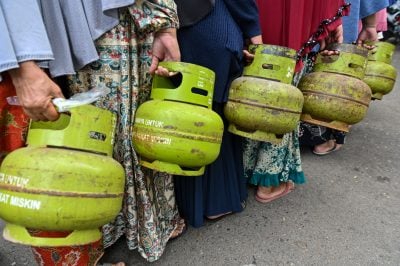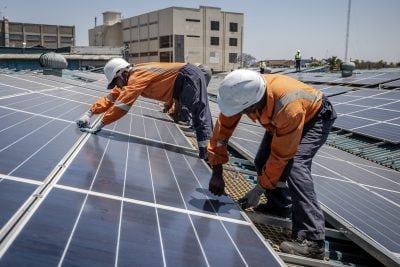In the absence of accurate data, a number of ideas about African agriculture have become received wisdom. But what, asks Luc Christiaensen, is the evidence?
Women’s labour contribution in African agriculture is regularly quoted in the range of 60-80%. Non-agricultural rural household enterprises are thought to be largely operating in survival mode. And Africa’s youth are nowadays considered to be leaving agriculture en masse.
These are just some of the ‘facts’ that drive our current thinking and policy narratives about agriculture and rural livelihoods in Africa. But accurate, representative, and up-to-date data on agriculture in Africa are hard to come by.
So what’s the truth behind these nuggets of received wisdom?
This is what an international consortium of researchers led by the World Bank under the Agriculture in Africa – Telling Facts from Myths project sets out to examine. It draws on new nationally representative household surveys from six African countries (Malawi, Uganda, Tanzania, Ethiopia, Nigeria and Niger) to do so. Together, these countries represent 40% of sub-Saharan Africa’s population, while also encompassing a wide array of diverse settings.
To be sure, not all factoids prove to be misconceived. (Thank God!) Nonetheless, the findings of the project deserve our attention, both to reassure that policies are on the right track and to reorient where needed. Here are three of the ‘facts’ that have been examined and challenged.
1. Do women grow 60-80% of Africa’s food?
Strikingly, it turns out that women contribute less than half of the labour input to crop production – 40% on average to be precise. The contribution is slightly above 50% in Uganda, Tanzania and Malawi, and substantially lower in Nigeria (37%), Ethiopia (29%) and Niger (24%).
This is well below the widely quoted 60-80% range, which proves to be a myth, and does not support calls for a disproportionate focus on female farmers to boost Africa’s overall food production.
These findings certainly do not refute the many other justifications for boosting female labour productivity in crop production, such as increasing women’s empowerment. But the economic rationale for doing so must be assessed against the costs and benefits from alternative interventions. This substantially shifts the conversation.
2. Are non-agricultural rural household enterprises operating in survival mode?
In addition to improving agricultural productivity, many non-agricultural jobs will be needed. In this, there has been a growing interest in fostering entrepreneurship and small business development as conduits for accelerating job opportunities. But little is known about their potential to do so, especially in rural areas where most of the youth and poor are.
With two in five rural households operating a household enterprise in surveys studied, non-farm entrepreneurship activities prove ubiquitous. Yet the vast majority also turn out to be small, operated from the household residence or local market, often only for part of the year, and failing as engines of employment generation (less than 3% employ five or more non-household workers).
This is more suggestive of survival than vibrancy. But household enterprises also display wide heterogeneity in productivity. Prosperous self-employment thus seems possible, even though clearly not (yet) widespread. Labour productivity is higher closer to urban centres and when activities are more skill- and capital-intensive.
That most household enterprises operate in survival mode thus proves to be largely true, and for rural household enterprises to play their hoped for role in successfully absorbing Africa’s growing youth bulge and reducing poverty, much action will be needed to boost their productivity.
3. Are young people abandoning the fields?
There is a perception that Africa’s youth is rapidly turning its back on agriculture. This would be worrying as Africa has not yet realised its agricultural potential, and the opportunities for productively absorbing the youth bulge outside agriculture are not yet in place.
It is also seen by some as proof of the limited potential of Africa’s smallholder agriculture for growth and poverty reduction, favouring mechanised farming structures instead.
But is Africa’s youth really leaving agriculture en masse? Yes and no. Younger age groups (20-35 years old) work systematically less in agriculture in Nigeria than the older age cohorts (36-60 year olds), though
the difference is much smaller in Uganda and Tanzania, minimal in Ethiopia or Malawi, and youth is actually more engaged in agriculture than the older cohorts in Niger. Clearly, the exit is not uniformly massive.
With GDP per capita in Nigeria three to four times higher than in Tanzania and Uganda, and seven to eight times higher than in Ethiopia, Niger and Malawi, the observed age gradients in time spent in agriculture across the countries does not surprise.
It is fully consistent with the process of structural transformation. As such it is not a real cause for concern.
As countries develop, economies and people’s occupations restructure away from agriculture. The mediation of this process typically falls on the shoulders of the youth, which tends to be better educated and typically finds it more difficult to access land.
These are just some of the insights the Telling Facts from Myths project explores.
Overall, the findings underscore the enormous value added from simple but up to date and solid descriptive statistics.
These can only be successfully generated when multi-purpose, nationally representative household surveys are regularly collected and made available, when a cadre of dedicated, competent national researchers is present and equipped to analyse them, and when the academic profession more broadly starts to pay attention again by properly rewarding the efforts of generating them.
Efforts are needed on all three fronts.
Luc Christiaensen is a Senior Economist in the Office of the Chief Economist for the Africa region of the World Bank.
Want to continue reading? Subscribe today.
You've read all your free articles for this month! Subscribe now to enjoy full access to our content.
Digital Monthly
£8.00 / month
Receive full unlimited access to our articles, opinions, podcasts and more.
Digital Yearly
£70.00 / year
Our best value offer - save £26 and gain access to all of our digital content for an entire year!
 Sign in with Google
Sign in with Google 


